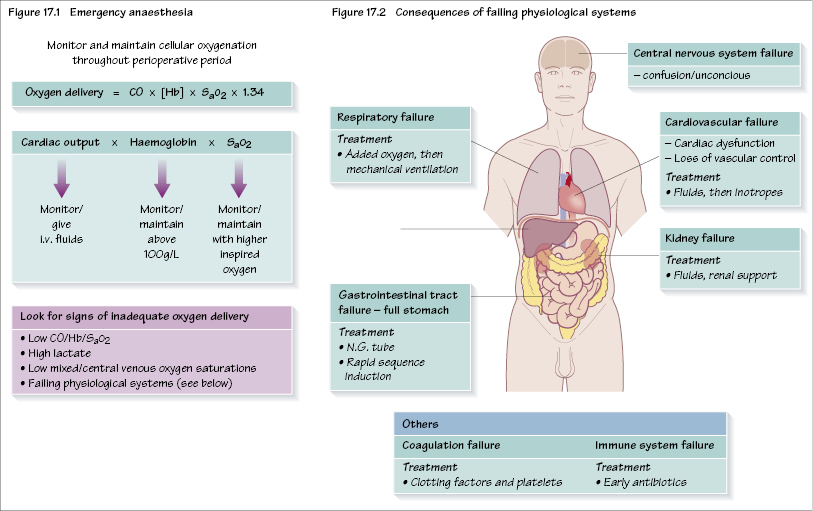17
Emergency anaesthesia

What is an emergency?
NCEPOD (National Confidential Enquiry into Patient Outcome and Death) defines surgical categories as immediate, urgent, expedited and elective (see Table 6.1).
Pathophysiologies that may be involved include:
- blood loss, e.g. trauma, GI bleeding, postoperative bleeding;
- dehydration, e.g. peritonitis, severe vomiting and diarrhoea;
- sepsis from any cause.
Resuscitation
There is a much higher morbidity and mortality in patients undergoing major emergency surgery in whom preoperative resuscitation is incomplete. Although a few operations (‘immediate’ cases) require surgery before resuscitation, in the vast majority of cases resuscitation can and should be completed prior to surgery. Three areas have to be considered:
In general, it may be difficult to radically change underlying co-morbidity (e.g. ischaemic heart disease/COPD) in the limited time frame, although some improvements may be possible. The major focus therefore is correcting physiological upset. Generally, this involves correcting fluid/blood loss associated with the problem (e.g. from gastrointestinal losses or blood loss, especially in trauma) and for some patients prolonged dehydration due to gastrointestinal obstruction. Occasionally, lesser surgery may have to be undertaken if the patient’s condition is too poor.
Signs of an adequately resuscitated patient
Stay updated, free dental videos. Join our Telegram channel

VIDEdental - Online dental courses


